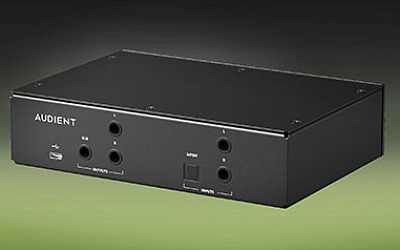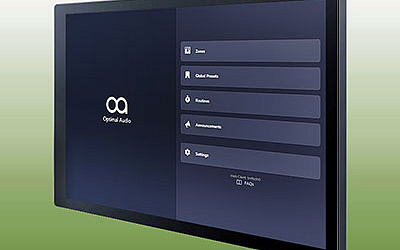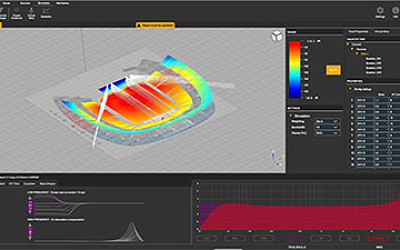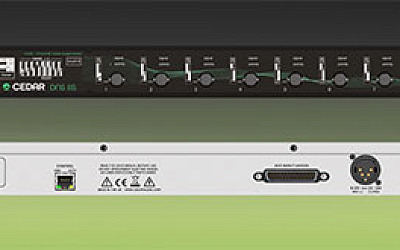Having released a series of updates over the past 18 months, Amadeus has announced v1.5 of its Holophonix spatial sound processor, adding functions and bringing corrections and improvements.
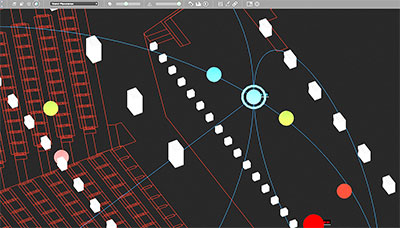 Version 1.5 includes new encoders and source formats developed by STMS, to ensure maximum compatibility with different Ambisonics capture tools. This new version also includes an equalizer, offering 5 PEQ plus high-pass filters, and low-pass filters. This equalizer is available for each virtual source and each physical (Dante) output, as well as spatialisation buses, offering more versatility and features to the processor.
Version 1.5 includes new encoders and source formats developed by STMS, to ensure maximum compatibility with different Ambisonics capture tools. This new version also includes an equalizer, offering 5 PEQ plus high-pass filters, and low-pass filters. This equalizer is available for each virtual source and each physical (Dante) output, as well as spatialisation buses, offering more versatility and features to the processor.
Developed with several musical, theatrical and scientific institutions, the Holophonix processor was designed in a collaboration with the STMS (Sciences et Technologies de la Musique et du Son), a laboratory founded in 1995 and hosted by the Institut de Recherche et Coordination Acoustique/Musique and affiliating the CNRS, Sorbonne Université, the Ministère de la Culture, and IRCAM around an interdisciplinary research theme dealing with music and sound sciences, and technologies.
‘We are answering requests from our extremely proactive users, who never stop sending us feedback,’ says Holophonix Chief Technology Officer, Johan Lescure. ‘The forthcoming 1.5 version is a more structural update. It includes a complete overhaul of the graphical user interface (GUI) and a totally revised communication bridge between servers and applications, optimizing high-speed transmission of OSC messages. Rewriting our graphical interface from the ground up, according to new Web technology standards, ensures optimal performances with today’s tools, with deep scalability and flexibility for the future.
‘In addition, a new application, Holophonix Updater, is now available. It allows the users to download updates themselves, to upgrade their station in perfect autonomy. Audio core performances have been optimised as well, and the user can still adapt the processor to its use, by choosing between CPU load and global latency, which can be as low as 1.90ms.’
The Holophonix processor is also now compatible with the Eigenmike em32 microphone, developed by MH Acoustics. It includes 32 microphone capsules, to capture soundstages in the HOA (Higher Order Ambisonics) 4th order format. The processor is also compatible with the ZM-1 microphone developed by Zylia. ZM-1 includes 10 microphone capsules, to capture soundstages in the HOA third-order format.
The processor already allows the processing of first-order Ambisonics streams in A-Format and B-Format. It can process natively raw signals available directly at the output of Ambisonics microphones (A-Format) like Sennheiser Ambeo, SoundField ST250, ST450 or SPS200, Røde NT-SF1, DPA-4 or Oktava MK-4012. It can also process a generic format source (B-Format) with parameters available to offer compatibility with various formats and standards (FMH, ACN, as well as normalizations FuMa, MaxN, and SN3D).
An offline editor software, Holophonix Designer, is also available, including a binaural pre-rendering function. Available on Windows and macOS platforms, this integrates the graphical functionalities of the Holophonix processor, with a binaural rendering engine to ease project pre-production while listening on headphones.
The processor integrates new MicTree virtual objects (or sources), to process a main ‘microphone tree’ more easily. A single ‘MicTree’ object can include 1-128 microphones. The Mics window allows the user to define the real position of the microphones, and if appropriate, to automatically realign each cell, in time (delay) and in intensity (level). Any MicTree source captures the integrality of the soundstage, without applying any specific processing to the signal.
Also part of the v1.5 update, the processor is equipped with a new decoder. Called LBAP (Layer-Base Amplitude Panning), this is an amplitude panning algorithm, for tridimensional set-ups based on layers with a different number of speakers for each. This algorithm works by selecting a speaker pair on each of the layers surrounding the source, applying an amplitude panning on each pair, then completing a level ponderation between the two layers. It ensures better results than VBAP (Vector-Base Amplitude Panning) for cube-shaped configurations.
‘Finally, Holophonix integrates the first software features leading towards using the processor and thus, possibly, mixing in Virtual Reality,’ concludes Lescure. ‘The processor is already compatible with the Oculus Quest headset, to more easily manipulate sources from a virtual and tridimensional room. Our users are looking for solutions to control and move sources via new interfaces and/or tools, more natural and more universal than traditional 2D-control surfaces. This innovative VR approach in the Holophonix 1.5 update is a first part of the answer, which we will develop and extend.’
More: www.amadeuslab.com
